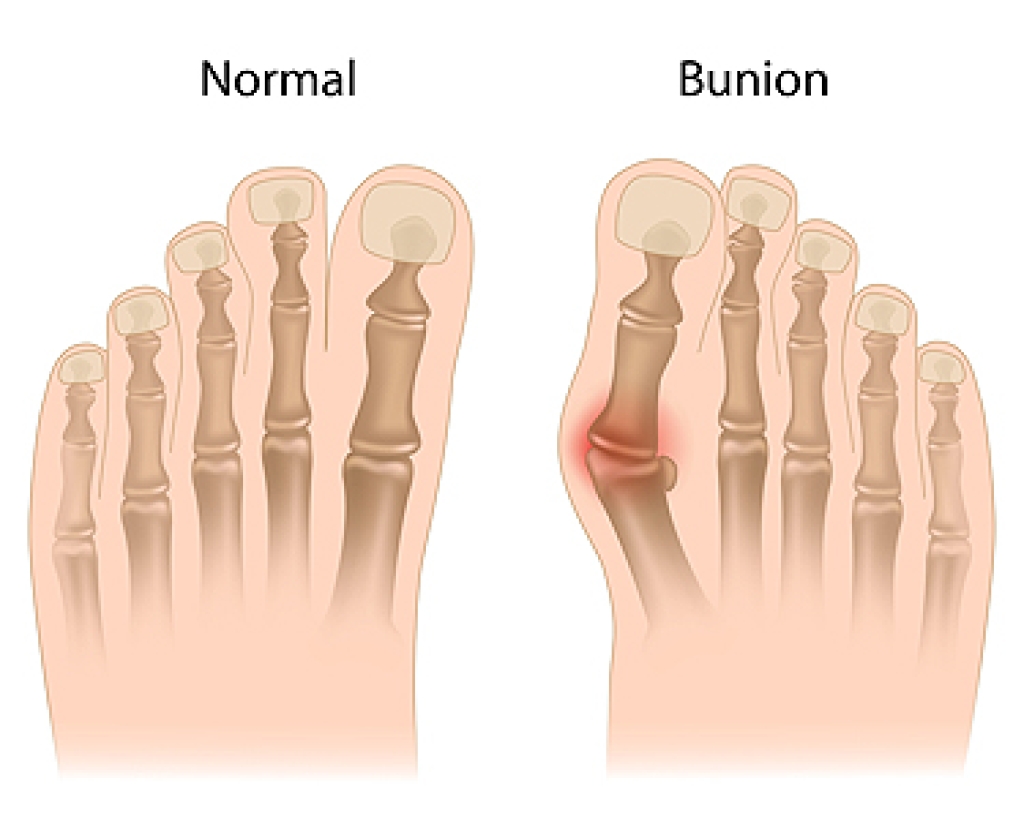
A bunion is a bony bump that forms at the base of the big toe, as the top of the toe angles toward the inner toes. This misalignment can lead to pain, swelling, and redness surroundig the joint. Over time, bunions may become more noticeable, with the bump growing larger and causing the skin to thicken or develop corns. Bunions are often caused by genetics, but factors like wearing tight shoes, high heels, or arthritis can also contribute. Symptoms include pain when walking, tenderness, and difficulty in finding comfortable shoes. Treatment options range from non-surgical to surgical solutions. A podiatrist can recommend changes to footwear, custom orthotics, and targeted exercises to ease pain and improve foot alignment. In more severe cases, surgery may be necessary to realign the toe and remove the bony bump. If you have a bunion causing discomfort or affecting your mobility, a podiatrist can provide personalized care. It is suggested that you schedule an appointment to explore your best treatment options.
If you are suffering from bunion pain, contact our doctors of Foot & Ankle Center of Oklahoma. Our doctors can provide the care you need to keep you pain-free and on your feet.
What Is a Bunion?
Bunions are painful bony bumps that usually develop on the inside of the foot at the joint of the big toe. As the deformity increases over time, it may become painful to walk and wear shoes. Women are more likely to exacerbate existing bunions since they often wear tight, narrow shoes that shift their toes together. Bunion pain can be relieved by wearing wider shoes with enough room for the toes.
Causes
- Genetics – some people inherit feet that are more prone to bunion development
- Inflammatory Conditions - rheumatoid arthritis and polio may cause bunion development
Symptoms
- Redness and inflammation
- Pain and tenderness
- Callus or corns on the bump
- Restricted motion in the big toe
In order to diagnose your bunion, your podiatrist may ask about your medical history, symptoms, and general health. Your doctor might also order an x-ray to take a closer look at your feet. Nonsurgical treatment options include orthotics, padding, icing, changes in footwear, and medication. If nonsurgical treatments don’t alleviate your bunion pain, surgery may be necessary.
If you have any questions, please feel free to contact our offices located in Oklahoma City and Yukon, OK . We offer the newest diagnostic and treatment technologies for all your foot care needs.
